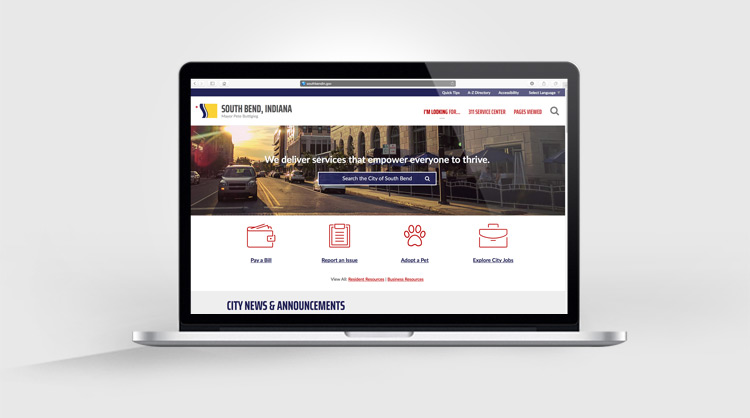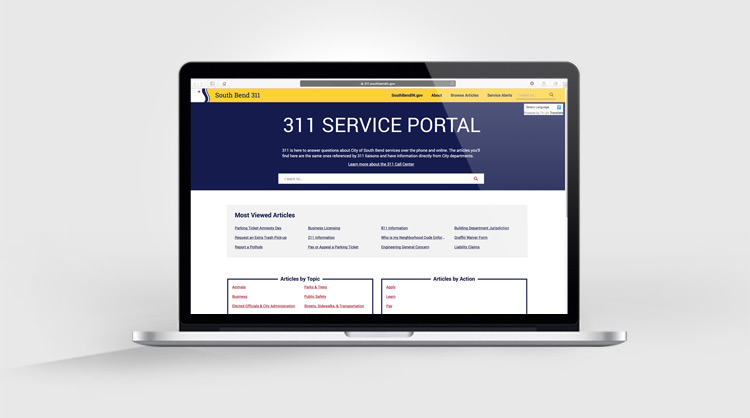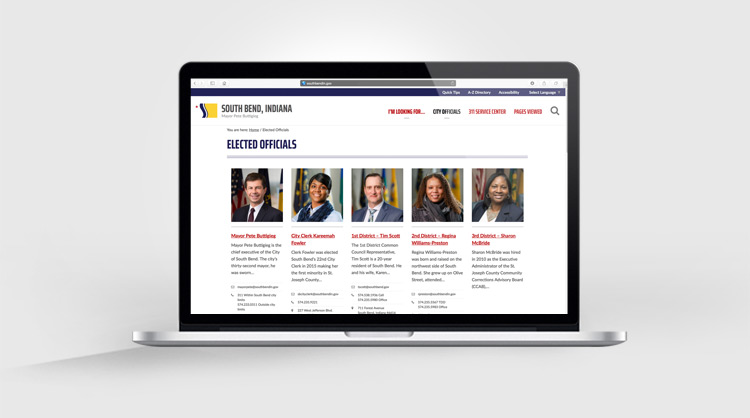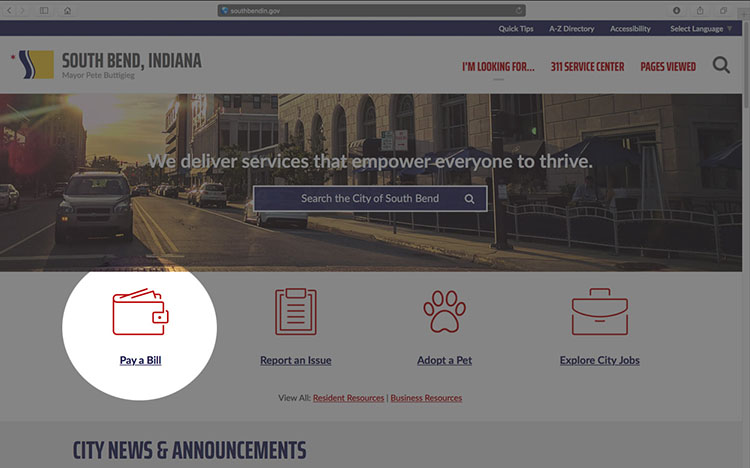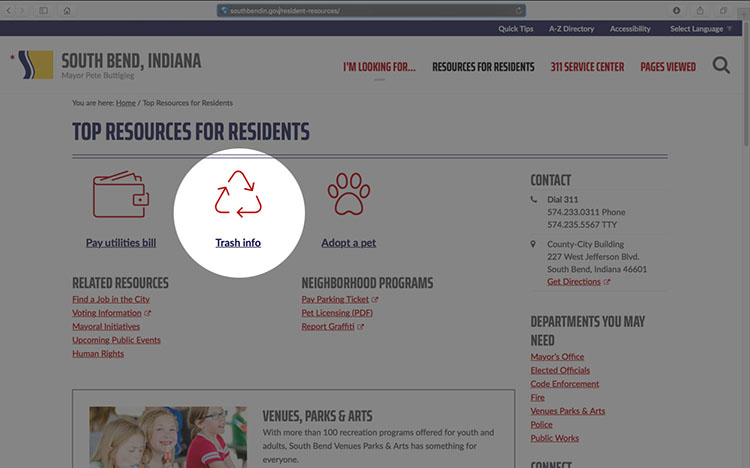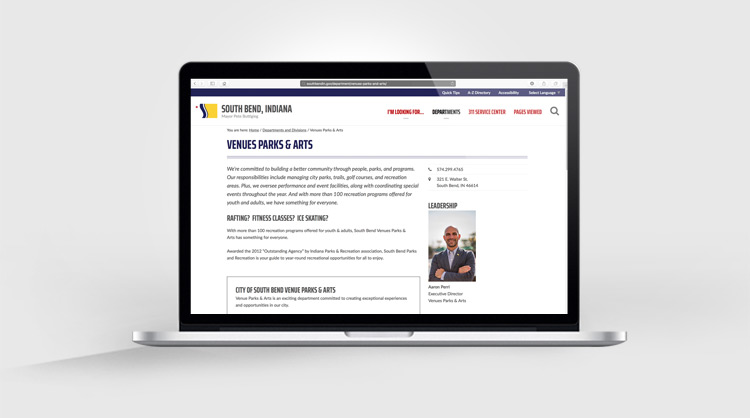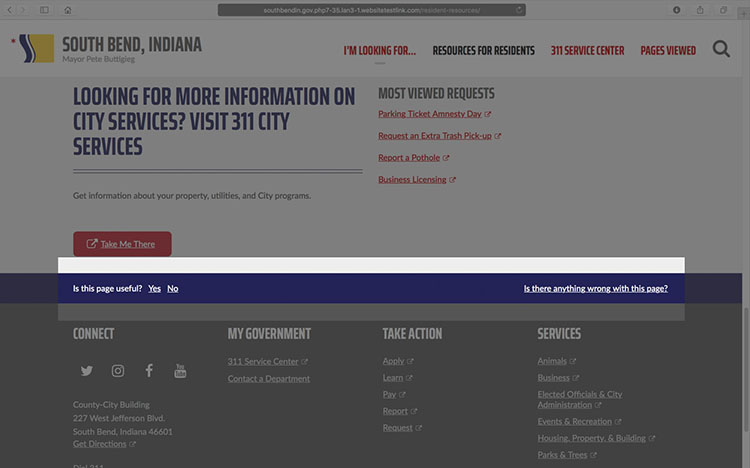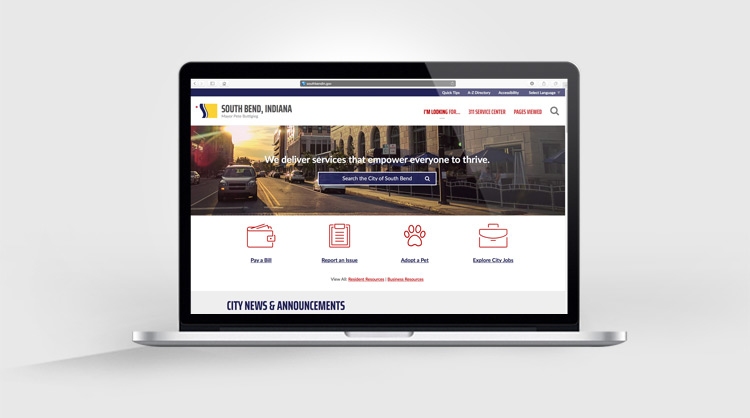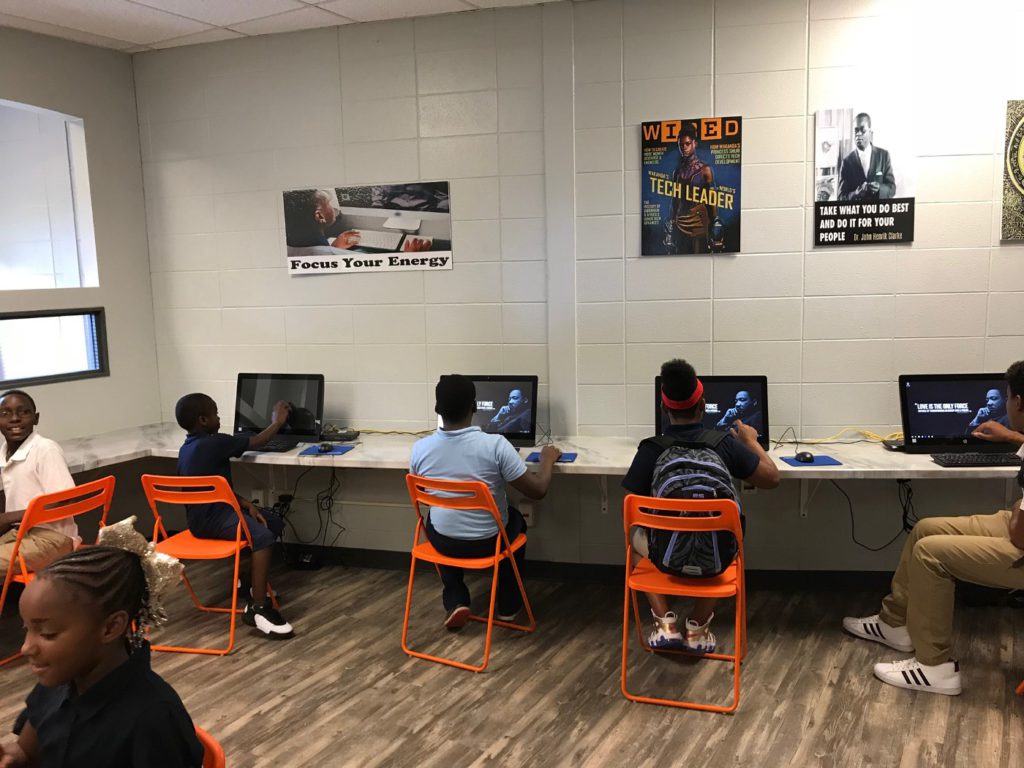
Having access to the internet doesn’t mean much without having a device that can use the internet, and vice-versa. In conjunction with our efforts to expand connectivity access, we’re working with community partners to provide residents with the devices they need to get online and maximize their connection.
South Bend’s Current State:
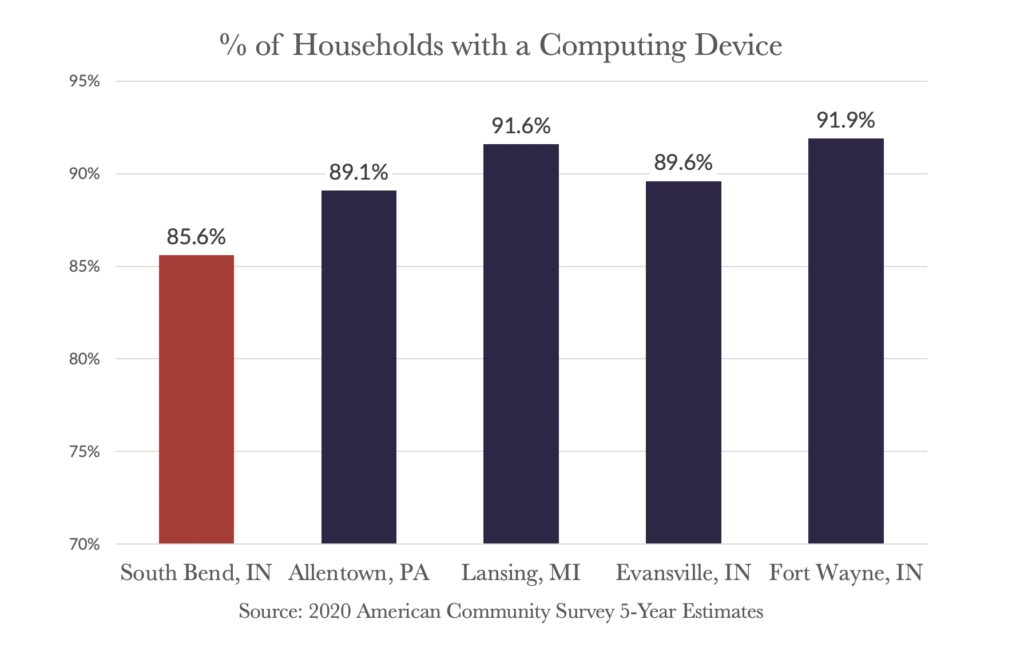
Today in South Bend, 85.6% of households have at least one computing device. While this rate seems high, it falls below our peer cities and represents approximately 14,000 residents who don’t have a device that can access the internet.
Furthermore, many families in South Bend that do have computing devices rely exclusively on mobile computing devices like smartphones. Only 69.1% of households have a desktop or laptop computer, which are much more effective for a variety of tasks, especially those for school or work, than a phone or tablet.
Like broadband access, device access is particularly limited in South Bend’s west side, which is disproportionately Black, Hispanic, and low-income. In one west side neighborhood, 40.7% of households have no computing device. Explore the map below to see how rates of device access vary across South Bend.
To move towards digital equity in South Bend, we must work to provide these households with the devices necessary to access the digital resources and opportunities of the modern world, paying particular attention to those areas which see the greatest need.
Device Access Goals:
Most recent updates: March 2023
- Work to ensure 90% of households have a computing device by 2025.
- Reach at least 50% participation in the Affordable Connectivity Program, which offers $100 device discounts to eligible residents, by the end of 2023.
- South Bend has won nearly $500,000 in federal grant funds to promote the ACP. See updates below.
- Maintain our 2 existing CLICK sites for public device access and add 3 CLICK sites by 2025.
- Expand partnerships to distribute laptop or desktop computers to residents by the end of 2023.
- We have partnered with La Casa de Amistad and the St. Joe County Public Library to distribute devices to residents. See updates below.
What we’re doing now:
To reach these goals, we are engaged in projects and committing to actions listed below. Please refer to this page often for updates as our efforts progress and we launch new initiatives.
Promoting the Affordable Connectivity Program (Updated July 2023)
- The Affordable Connectivity Program, a federal assistance program offering discounts to eligible households on broadband service, also offers one-time discounts on computers, tablets, and smartphones up to $100.
- We are leveraging community partnerships (including through Citywide Classroom and the South Bend Connectivity Coalition) as well as the City’s Outreach Team to promote participation.
- Click here to learn more about signing up for the ACP.
Update, March 2023: South Bend has won nearly $500,000 in federal grant funding to encourage signups for the ACP in our community. This includes $300,000 for ACP outreach activities and events and $193,000 for ACP navigators – individuals who help residents through each step of the signup process.
Update, July 2023: The City has begun building out a team of contractors to promote the ACP through community outreach.
Offering Public Devices at CLICK Sites
- Since 2018, the City has partnered with ChoiceLight and the St. Joe County Library to provide publicly accessible computers, printers, scanners, and high-speed internet in community centers in South Bend.
- These Centers for Learning, Information, Connectivity, and Knowledge (CLICK) provide devices for residents who otherwise might be unconnected.
- Visit this link to learn more about CLICK sites and where you can find them.
Partnering with our Library to Encourage Device Use
- Like many communities, our library is an essential resource for unconnected residents. Each branch of our St. Joe County Library offers no cost high-speed internet, computers, printers and scanners, and other devices for resident use.
- The St. Joe County Library is a founding member, along with the City, of the South Bend Connectivity Coalition. As members of this coalition, we will continue to partner with the library on strategic connectivity initiatives and encourage residents to use its resources.
Exploring Device Distribution Programs (Updated July 2023)
- In conversations around South Bend, community organizations have discussed the potential value of putting devices in the hands of residents to directly address device access. Moreover, these devices could be distributed as an incentive for completing digital skills trainings, addressing how these areas of the digital divide are interconnected.
- In 2022 and 2023, we will explore how we might be able to expand partnerships to support a program like this.
- Our team is also exploring how we can promote financial and environmental sustainability by refreshing old devices with lightweight operating systems to give to residents.
- Update, March 2023: We are currently piloting a partnership with the St. Joe County Public Library and La Casa de Amistad to distribute refurbished desktop computer stations to residents who complete a digital skills training course.
- Update, July 2023: In June of 2023, we supported the first cohort of a new partnership between La Casa de Amistad and SJCPL to provide devices to residents who complete a digital skills training course. Participants who attended 12 computer classes received a refurbished desktop station donated by the City at the first cohort’s graduation ceremony.

